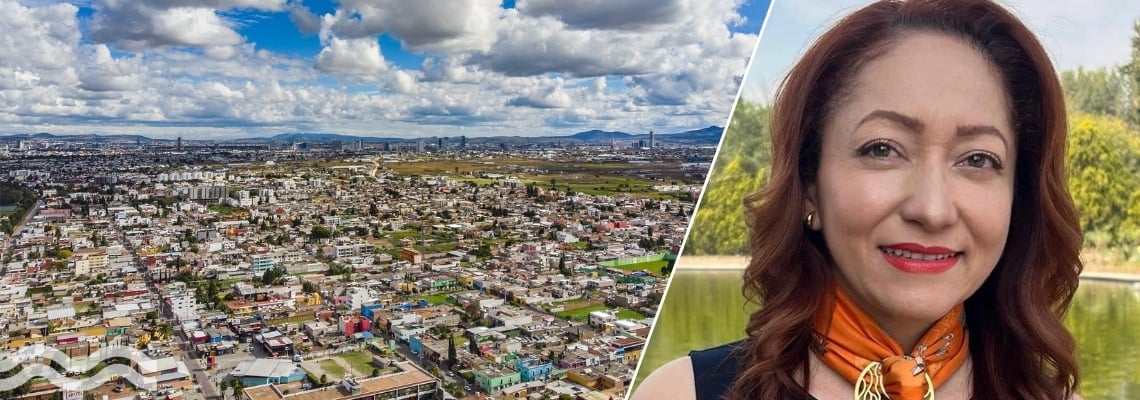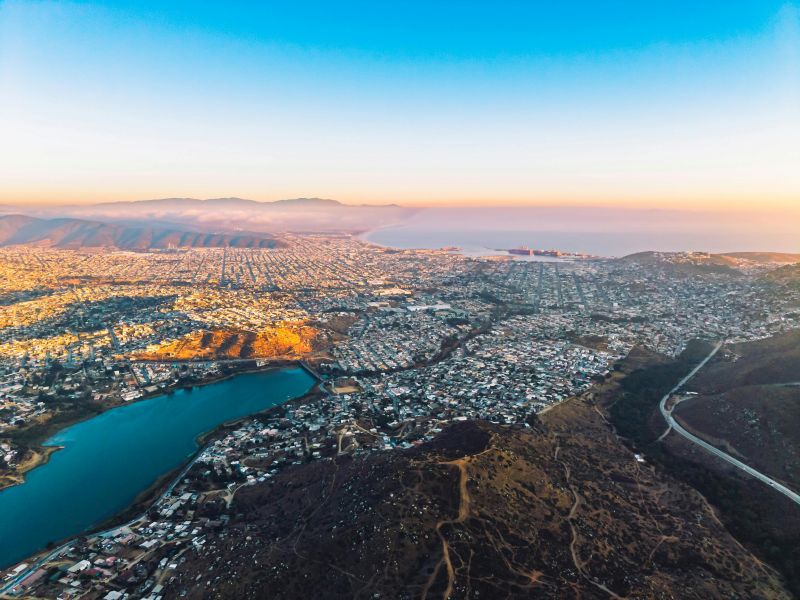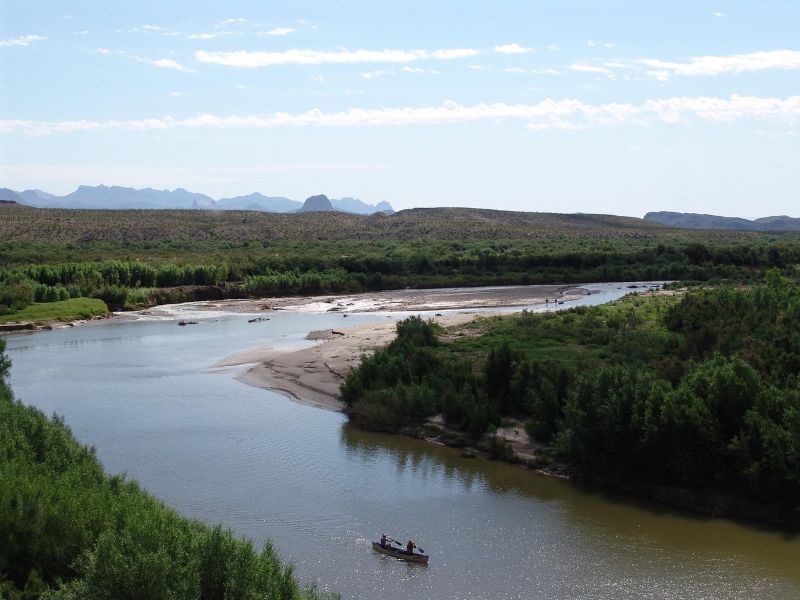Mexico’s government is on a mission to improve water security in the country. Aquatech Online talked to Marissa Mar Pecero, a consultant in water governance and a member of the National Water Advisory Council, to find out why the issue is so important and what action is being taken, including increasing the use of digital solutions.

Mexico is a country with 130 million inhabitants and a territory of almost 2 million km², with 757 hydrological basins and 653 aquifers. Its water problems have hit headlines beyond the country’s borders for a number of years.
The capital city was in danger of running out of water very recently following a long period of drought. Ageing infrastructure, over extraction, reservoirs at record low levels, and increasing demand throughout the country, added to the challenging national situation.

According to the National Water Commission, 39 per cent of the national allocated water volume comes from groundwater and 61 per cent from surface water. In terms of quantity, water is available in only 58 per cent of aquifers, and 17 per cent of all aquifers are overexploited.
In terms of river basins, 86 per cent show water availability; however, 65 per cent of monitoring sites in these basins report water that is contaminated or heavily contaminated with fecal coliforms.
Achieving water security is impossible without better information, technology, and the participation of all stakeholders - Pecero
Pecero explained further: “The existing water treatment and sanitation infrastructure may lack the appropriate technology to detect and remove contaminants. An example of this was the contamination of wells in Mexico City in 2024, which was neither detected nor addressed by the responsible authorities until complaints from affected residents began to multiply.”
A lack of governance is often cited as reason for the current water crisis, Pecero added: “This is reflected in the underutilisation of technology as a means to improve management. Achieving water security is impossible without better information, technology, and the participation of all stakeholders, including society itself.”
The federal government is working on improving its water management systems: “One of these efforts involves creating a single database to organise and handle all procedures related to water concessions, called the National Water Registry for Wellbeing (RENAB). Another system, the PODAN, is being developed so that citizens can report irregularities in how national waters are used or polluted,” Pecero said.
She added: “However, it’s still unclear how these efforts will improve the measurement of water levels, especially underground water. Or how they will help detect pollution or verify cases of misuse. This is where technology should play a much more important role.”
Among the water utilities responsible for water supply at the state or municipal level, the Monterrey Water and Drainage System, which serves the state of Nuevo León, and the State Water Commission of Querétaro stand out.
Both maintain some of the highest levels of coverage and efficiency at the state level, with strong support from technology.
At the local level, Pecero explains, municipalities such as León in Guanajuato, La Piedad in Michoacán, Ciudad Juárez in Chihuahua, and Saltillo in Coahuila are also noteworthy. “The latter is one of the few systems in the country operated by Veolia and therefore incorporates the kind of digitalisation advancements commonly seen in Europe.”
In the industrial sector, notable examples include the brewery Heineken, whose plant in Meoqui, Chihuahua, is recognised nationwide for its water-use efficiency.
Cases like this stand out not only for their on-site efficiency but also because their sustainability and digitalisation strategies extend throughout their agricultural value chain, promoting better practices and strengthening local capacities.
“I believe it is important to highlight that the industrial sector has significant potential for improvement through collaboration and learning within specific subsectors or clusters,” Pecero added. “Their real impact and contribution to large-scale water solutions should be recognised rather than criticised, provided they also operate with transparency. This is the case for industries such as beverages, semiconductors, and hospitality, to name just a few examples.”
The federal government has announced plans to strengthen the modernisation program for Irrigation Districts, aimed at recovering water volumes from concession titles. However, according to Pecero, there is no clear explanation of exactly how this water will be ‘transferred’ or ‘allocated’ to the domestic sector, which has been identified as the top priority.
Another issue that receives little attention is the protection of sensitive information and personal data, particularly in terms of cybersecurity. In 2023, the National Water Commission suffered a cyberattack that disrupted its operations for nearly three months, significantly affecting its internal processes and raising concerns among experts about the reliability of the recovered data.
Real impact and contribution to large-scale water solutions should be recognised rather than criticised - Pecero
A widespread challenge is ensuring that both public and corporate information, as well as the way it is generated, is made available to promote greater transparency, as Pecero explained: “We often see companies reporting major progress in sustainability strategies abroad, whether at events or in their reports, we also know about Water Positive goals, which is great, but when invited to expert forums, they either do not attend or do not provide enough information to size the scale of impact.”
She believes that this is critically important for improving public and governmental recognition and trust in such projects.

Greater investment is needed in devices and sensors that can measure both the quality and quantity of water, Pecero explained: “Not only in water bodies, but also within distribution networks, as well as in homes and buildings.”
Improvements are also required in remote sensing through drones and satellites, along with the optimisation of Geographic Information Systems (GIS) and the support of communication networks that truly enable efficient access to information, especially in areas identified as development hubs by Mexico’s president.
“Accelerating the use of predictive analytics, artificial intelligence (AI), and digital twins would enhance the ability to identify consumption patterns across different user groups, simulate scenarios, and support decision-making to anticipate infrastructure maintenance and performance, such as in distribution networks and dams,” Pecero stated.
This would also improve climate monitoring, which has a significant impact on risk management in the face of extreme hydrometeorological events.
Accelerating the use of predictive analytics, artificial intelligence (AI), and digital twins would enhance the ability to identify consumption patterns - Pecero
Pecero also believes that AI and process automation can be applied to the treatment and use of reclaimed water (originating from municipal and industrial wastewater sources) with a direct impact on both the quantity and quality of water, ultimately benefiting human and ecosystem health. However, the largest consumer of water, and therefore the greatest challenge, is irrigation for agricultural purposes.
“It’s worth noting that technology empowers people to actively participate and contribute to all of these efforts, even from their smartphones, through the creation and use of apps designed to engage them,” Pecero concludes. “This potential is also reflected in the growing ecosystems of entrepreneurship and citizen science.”
CONAGUA is finalising the 2025–2030 National Water Program, which is structured around four guiding pillars: Regulation of water concessions; Irrigation modernisation; Sanitation and river restoration; and Strategic Water Projects.
Alongside this, the National Agreement for Sustainability outlines 10 key points, of which Digitalisation and Streamlining of Procedures, and the Promotion of Technological Innovation (this is directly related to improving the availability of water for human consumption), stand out.
“This is an important moment,” confirmed Pecero. “From my perspective, there are other government actors whose roles should be more closely integrated to enhance the use of technology in water management. These include the Ministry of Science, Humanities, Technology and Innovation; the National Institute of Statistics and Geography (INEGI); the Mexican Space Agency; the Digital Transformation and Telecommunications Agency; the Mexican Institute of Water Technology; and the Ministry of Economy.”
The latter, Pecero explained, could take on a greater strategic role by promoting specific incentives for companies and industries that adopt, share, or invest in technological innovations aimed at improving water management.
In the Latin American region, there is growing interest from development banks. Primarily, the IDB, CAF, and especially the World Bank, with initiatives such as ‘Utilities and Irrigators of the Future’.
Additionally, there are innovative frameworks that address water challenges in a more integrated way. While clear and decisive government participation is still lacking, there is growing collaboration and resource mobilisation among other strategic actors.
From my perspective, other government actors should be more closely integrated, to enhance the use of technology in water management - Pecero
For example, companies contribute technology and other capabilities such as training, while other stakeholders are interested in financing watershed or water body restoration in areas of high-water stress, often as a way to offset their impact on the resource.
Water users – mainly farmers – are also involved. Examples of such initiatives can be found in the Calera aquifer in Zacatecas and basins such as Moctezuma in the Valley of Mexico, Lerma, and the Lower Río Bravo. In these cases, irrigation management is being promoted through AI, with users provided access to digital platforms and smart irrigation tools based on climate and satellite data.
Research has an important role to play in informing investments in technology and infrastructure. Pecero would like to see academia collaborating with both national and international research centres to process information, develop models, and recommend investments in infrastructure or technology based on cost-benefit analyses and lessons learned from similar cases.
Current examples of how this works well include the Water Center at ITESM, the Regional Water Security Center at UNAM, and the International Water Management Institute (IWMI), which is currently sharing its expertise with the National Water Commission.
Working this way would avoid duplication of efforts and resources, as Pecero explained: “Ultimately, those with a national-level perspective should know where and by whom best practices are being implemented, to explore opportunities for replication, scaling, or identifying areas where progress is lacking, so that capacity-building efforts can be directed to those regions or sectors.”
In Querétaro, the State Water Commission (CEA) has incorporated sensors to detect non-visible leaks in the metropolitan area of Querétaro. In Monterrey, Water and Drainage Services have invested in sectorisation, installation of valves, meters, and sensors for monitoring flow, pressure, and consumption, as well as a platform that incorporates Machine Learning and AI for decision-making, reporting overall water savings of 17 per cent. In both cases, this improves the water resilience of these major urban centres. Other municipalities leading in this area include León, Ciudad Juárez, and Saltillo.
All of the aforementioned stakeholders have participated in recent editions of Aquatech Mexico to share their expertise.